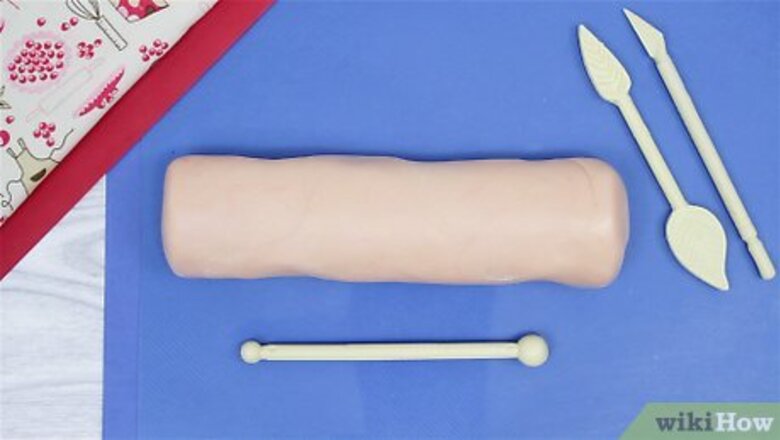
views
X
Research source
Marzipan is used in baking for making decorative figures and covering cakes. Since it starts untinted, you will need to go through the steps of coloring marzipan before using it on your baked goods. Premixing color into marzipan may be simpler; however, if you want to use shading and multiple colors, try painting it instead.[2]
X
Research source
Mixing in Color
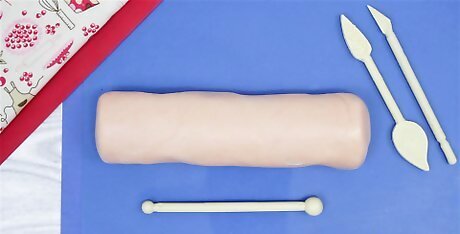
Prepare the marzipan. Make or use pre-made marzipan. Portion off the amount of marzipan you want to color. Allow the marzipan to come to room temperature so the texture is soft and workable. Knead a few drops of corn syrup into the dough if it still seems stiff. Divide the marzipan based on the number of colors you will be using.
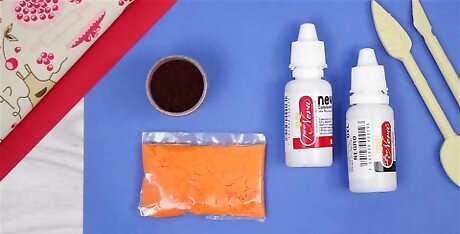
Select your type of coloring. Use food coloring paste for darker colors or food coloring liquid for lighter colors.
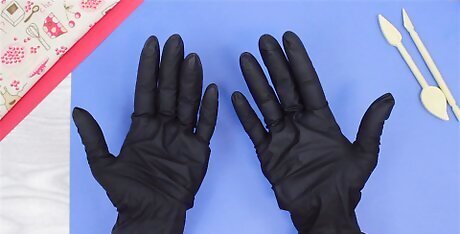
Protect your hands and clothes from the dye. Since mixing color into marzipan is a hands-on process, you will want to take measures so that the food coloring does not stain your hands or clothes. Put on disposable food preparation gloves. If you prefer working without gloves, use a dab of shortening on your hands. Shortening will keep your hands moist and also helps prevent the dye from staining your skin. Wear an apron or smock to protect your clothing.
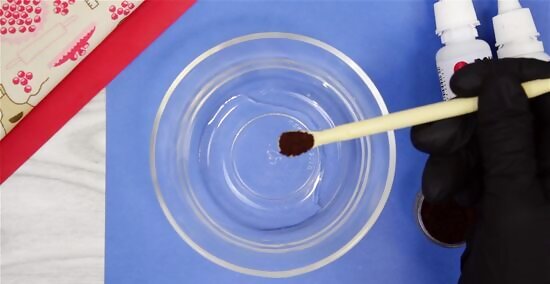
Dip a toothpick into the coloring. For deep or dark colors, add powdered food coloring in with the liquid or paste so that the marzipan does not become sticky and difficult to work with.
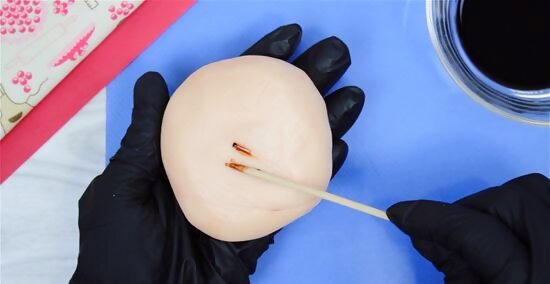
Wipe the coloring off the toothpick and onto the surface of the dough. Start out with just a dab. You can always add more coloring if desired. You can experiment with achieving different hues by adding dabs of multiple colors.
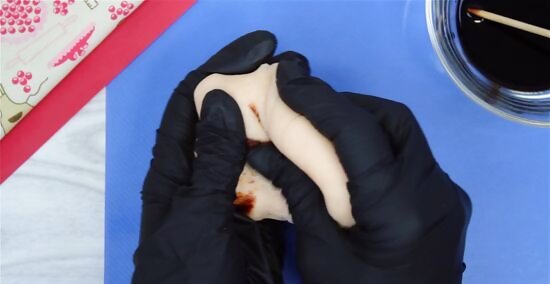
Knead the marzipan with your hands. Continue kneading until the color is consistent and free from streaks. If the color is darker or richer than you want it to be, you can add more marzipan to lessen the hue’s intensity. If you are using food coloring paste, its color may shift as it dries, so mix it into the marzipan at least 15 minutes before settling on the final color.

Shape the marzipan as desired. You can smooth out any cracks that form in the marzipan by rubbing a little bit of water on them.

Add details. Dip a paintbrush into the food coloring liquid or paste. Use your paintbrush to apply bold definition to the exterior of the marzipan. For example, paint markings onto petals or leaves. You can use a toothpick instead of a paintbrush to get thin details like veining.
Painting Marzipan
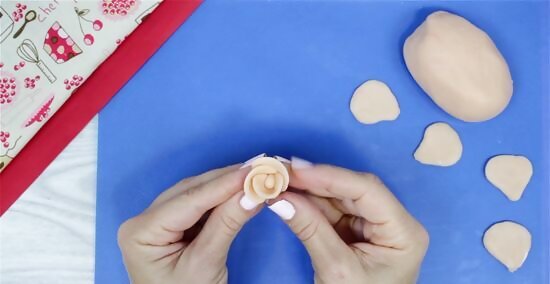
Shape the marzipan. Cover your cake or form the marzipan decorations you want to use while the marzipan is still in the state of its natural color.
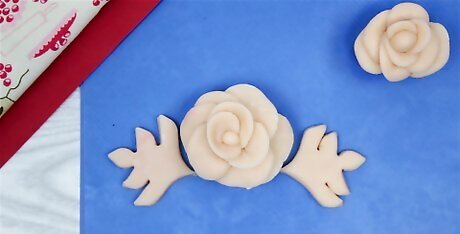
Let the marzipan sit. Allow the marzipan to dry overnight. This makes a good surface to paint on, one that is not too moist. Choose a dry, cool place - do not refrigerate.
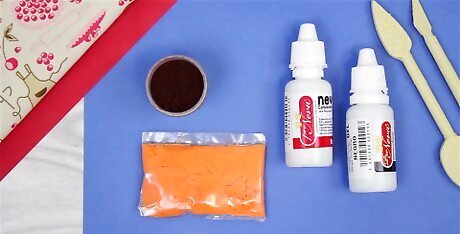
Select your type of coloring. Choose your food coloring medium based on the strength of hue you want to achieve. Liquid food coloring is water-based and produces lighter colors than paste. Paste has the strongest color. For a subtle, more delicate color, use powdered coloring.
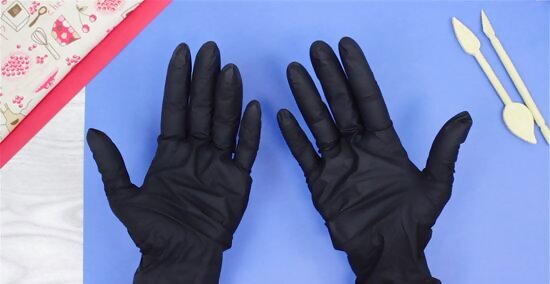
Protect your hands and clothes from the paint. Wear disposable food preparation gloves and an apron or smock.
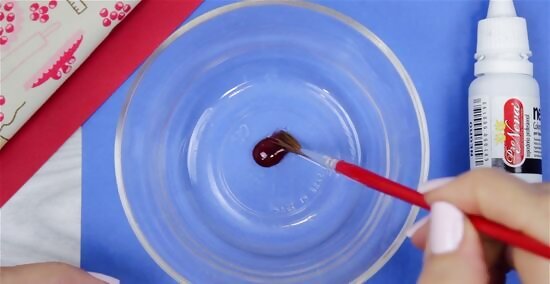
Dilute the food coloring. Adding water allows you to achieve the color you want and a thinner consistency. Put a bit of food coloring in the bottom of a bowl. Using your paintbrush, add water from a cup into the bowl until the food coloring is as diluted as you desire.
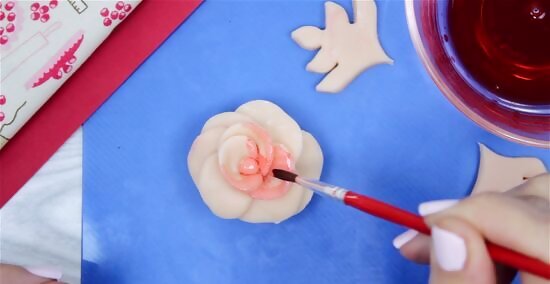
Paint the marzipan. Dip a paintbrush into the diluted food coloring paint you have just created, and brush it on the marzipan figures. You can dip the paintbrush directly into undiluted food coloring to add strong definition to certain details – for example, the lines in a petal or leaf.
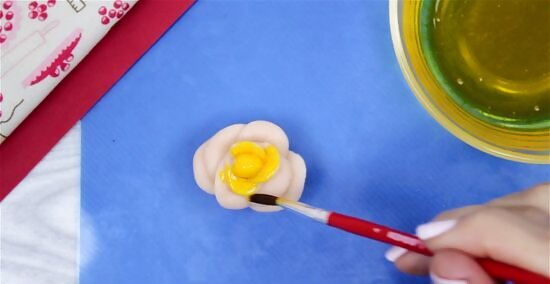
Dilute vanilla. For a watercolor effect, dilute clear, alcohol-based imitation vanilla with a small amount of water in a dish. Pick up powdered coloring with a paintbrush and swirl it into the water and vanilla mixture. Apply to the marzipan with a paintbrush to create shading and/or the illusion of texture.
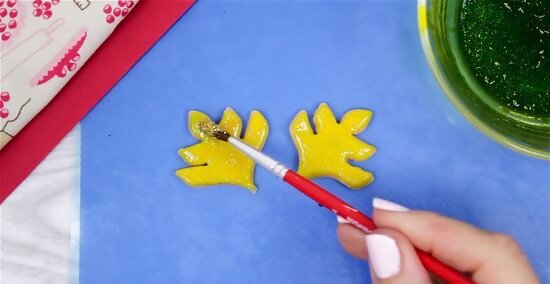
Add luster with petal dust. You can achieve even more detail by adding petal dust to the coloring. The marzipan should be already shaped but not yet dry. Pour some petal powder onto a saucer. Use a clean, dry paintbrush to add luster to the marzipan.


















Comments
0 comment